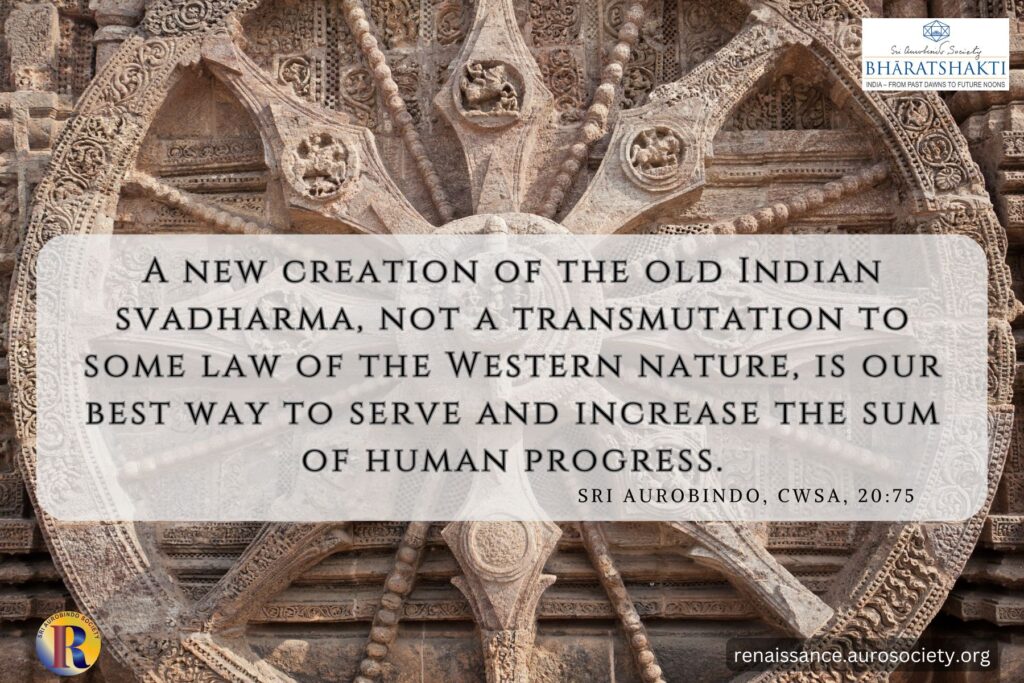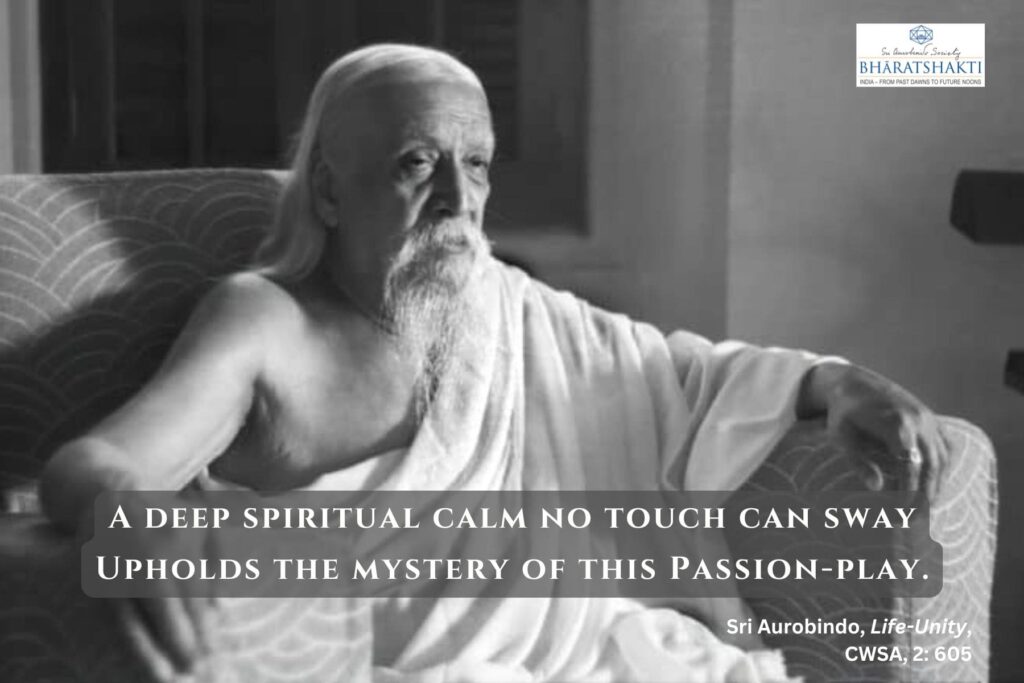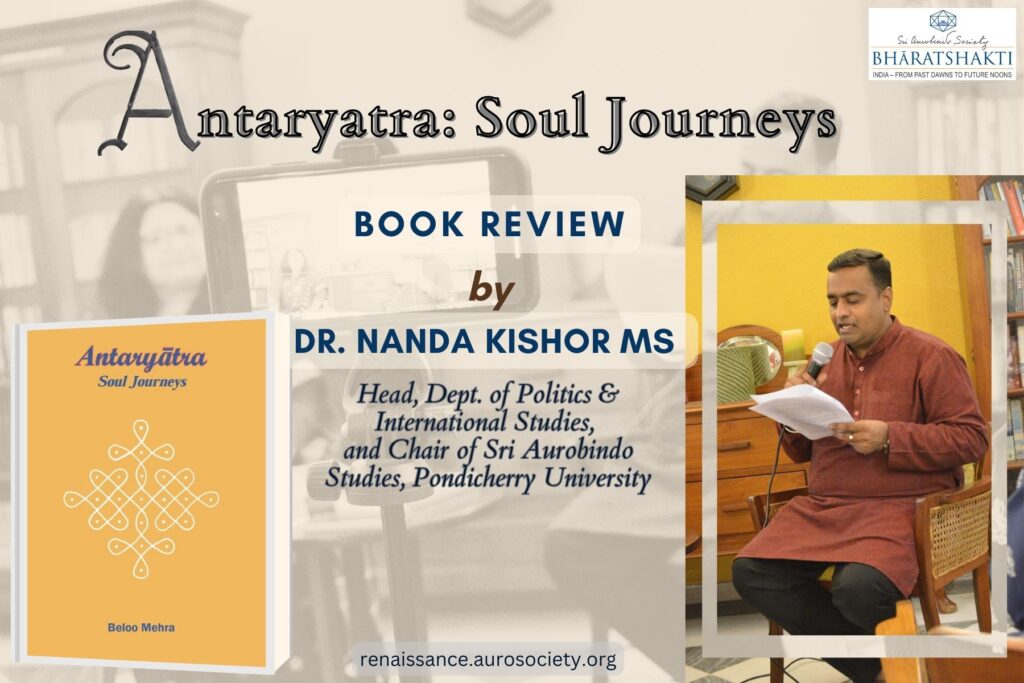Volume I, Issue 2
Author: Sisir Kumar Mitra
Continued from Part 3

The Invasions and the Unity of India
The western approach to polity is too superficial to be of any real and lasting benefit to the collective well-being of man. It creates problems but does not – because it cannot – offer any solution to them. It is tied to the blundering ways of the mind and constructs precarious external patterns in which the deeper urges of life find no scope for self-fulfilment.
Sri Aurobindo points out its basic defect when he says:
“The sophisticating, labouring, constructing, efficient, mechanising reason loses hold of the simple principles of a people’s vitality; it cuts it away from the secret roots of life. The result is an exaggerated dependence on system and institution, on legislation and administration and the deadly tendency to develop in place of a living people, a mechanical State.”
(CWSA, Vol. 20, p. 400)
The Decline of Indian Socio-Political System
In spite of its being founded on the intrinsic truths of human nature, the socio-political system of India succumbed to the shock of the Mohammedan onslaught. Even a cursory view of the social and political conditions of the time would show how she was taken at a disadvantage and hit upon the most vulnerable point of her socio-political structure.
The cultural and spiritual unity remained almost intact, no doubt, but the country had little political integrity worth the name, mainly because the society – always in ancient India the basis of her political structure – had ceased to be a cohesive force in the communal consciousness of the people.
The conservative mind of India took the continued irruptions of the barbarians during the earlier centuries of the present era as a threat to the life and culture of the country. Although most of these foreigners were gradually incorporated or assimilated with the collective being of the people, the custodians of the ancient traditions did their utmost to preserve their sanctity. They thought that the best way of doing that would be to reinterpret the social laws to meet the exigencies of the time.
Unfortunately, however, in their efforts to do so, they followed the letter and forgot the spirit, placing restrictions upon the application of the laws, erecting new caste-barriers and curtailing the social rights of the non-Brahmin communities, so much so that the society became more and more rigid in its organic movements and showed signs of decadence and disintegration.
This was, of course, a long and protracted process but it took a worse form during the Muslim invasion. The effect of this on the already enfeebled national consciousness surviving in the states and kingdoms was a progressive decay and an eventual incapacity to coalesce with the various political units and present a solid and united front against a foreign aggression.
Lack of One Central Authority
A unification of the whole country under one central authority, forming an impregnable bulwark of defence, could not be fully achieved in ancient India, owing, among other causes, to insufficient communications and the lack in the powers that be of any will to crush out of existence the smaller states and principalities.
Many of these states whose compactness and individuality were largely responsible for much of their social and cultural progress, tended almost for the same reason to be more and more exclusive and self-centred and therefore unwilling to stand any imperial authority at the centre, with the result that an integration of the whole country which in historic times was possible on several occasions through the impact of such an authority, could not grow into a cohesive force in the political life of ancient India.
Moreover, the indifference of these states to the larger interests of the country and the lack of an effective solidarity among them exposed India to foreign aggressions.
Early Attempts of Creating a Federation
Nevertheless, the attempt was always there to integrate these states as well as peoples and nations by bringing about their unity while maintaining their respective autonomies in a larger free-and-living organism.
The institutions of the royal sacrifices, such as Rajasuya[1] and Aswamedha[2], the ideal of universal kingship, such as Sarvabhauma (dominus omnuim), Chaturanta, Chakravarti, point to the constant efforts of the kings and emperors of ancient India to extend the territorial boundaries of their empires to the utmost limits, and to consolidate their integrity under one imperial authority. The Itihasa-s[3] and the Purana-s[4] give vivid descriptions of the vastness and splendour of these early maharajyas of India.
The royal sacrifices, however, had a deep political significance in that they fostered the growth of a kind of federation of the various states and kingdoms in early India. And this federation, like everything Indian, had a spiritual basis too. For, though the emperor was there to whom due allegiance was professed by all the attending kings and potentates from different parts of India, the inner consecration of the heart was always made to the Lord of the Sacrifice, the King of kings, the Supreme.
To these rulers as to every Indian, Bharatavarsha was the Devabhumi, the holy land of God, and it was God alone whom they worshipped as the real dispenser of their country’s destiny.
And was it not this spontaneous adoration by which they were united into a fellowship of service to their common motherland, whose welfare, greatness and glory they regarded as their sole concern and which they knew they could best promote by furthering the cause of progress in their own autonomous kingdoms? A remarkable endeavour, indeed, of that heroic age of India!
It may be noted that the kings who participated in these sacrifices did so not as vassals or subordinates but as free comrades pledged to the common ideals of the race, dedication to which they used to reaffirm in these royal functions.
The Satapatha Brahmana and the Aitereya Brahmana contain references to a number of such gigantic royal ceremonials. Of great historical importance, however, is the Rajasuya Sacrifice described in the Mahabharata. It was responsible for the creation of a federation, a Federal Union, so to say, comprising most of the states and kingdoms of the India of the time following the Kurukshetra War.
The Imperial Dharma and Communal Freedom
The institution of royal sacrifice, especially of Aswamedha has for centuries been celebrated by the monarchs of India not only as a symbol of their prowess and victory but as a sign of their effort to strengthen the integrity of the whole country under the sovereignty of an Ekrat, the Lord-Paramount, the highest of whose duties it was to uphold the Dharma and to see to its proper observance by the people, on which, they believed, depended the progress of the race.
But in later times, – and it continued to be performed almost throughout the whole period of Hindu kingship in ancient India – the institution lost much of its pristine grandeur, owing, among other reasons, to the largeness of vision which had inspired it in the early days having begun to diminish in the consciousness of the monarchs concerned. But these Unions were more or less of a loose nature and could not grow into compact ones, lasting, as they did, only for a time. Nevertheless, they are proof of how India tried to build political unity in those dim days of her past.
In historical times the largest All-India Empire was that of the Mauryas, but it also had within it a number of independent kingdoms which were left to develop on their autonomous lines. The empire of the Satavahanas of Andhra had in it a number of self-governing feudatories.
The famous Gupta Emperor, Samudragupta allowed certain states in Gujarat, which he had conquered, to continue their own rule under his hegemony. The Palas of Bengal showed similar magnanimity to some smaller states within their big empire which extended far to the North and the South.
But these are only a few among many instances of the far-sighted and large-hearted statesmanship of the emperors of ancient India, who knew well enough that the vitality of a people flourishes better in the freedom of small autonomous groups and communities than under a dead-level uniformity of a too complex centralised government.
Therefore, when these emperors found any group strongly individualistic in its self-expression, far from viewing with disfavour or attempting to suppress, they used often to respect and recognise their liberty.
If India is to Be One and Great
India, till the Mohammedan conquest, never showed her incapacity to absorb many foreign peoples and their cultures. This was largely due to the free play of her life-force conserved in the various units of her collective life as a result of the freedom of growth and development either voluntarily granted by the central power or wrested out of its unwilling hands.
Even during her days of decline when conditions were not at all favourable to such a phenomenon, India witnessed an outburst of militant patriotism among the Marathas and the Sikhs who proved that the race was yet capable of giving a good account of itself by summoning up whatever vitality it still had in it when a right leader, a heroic and selfless soul, came forth to carry out the will of the Mother as her chosen instrument.
The Impact of British Imperialism
The coming of the British to India is an event of outstanding importance in her modern history. It was responsible for many things that were good but also a lot that proved positively disastrous for her.
British imperialism destroyed, among other things, the natural divisions of the country and erected artificial boundaries to suit their administrative convenience. A unity came into being, no doubt, but it was not the perfectly natural and flawless unity of a living organism, every part of which could freely function and contribute to the well-being of the parent body.
It was a mechanical superimposition, a levelling but fettering regimentation, devised to serve the interests not of the people but of their alien rulers. And yet, as things went, it did bring about a sort of political unification of the country.
The Task Ahead
The time has now come for these artificial divisions to give place to the natural that alone can guarantee ample scope for the free development of its regional peoples. There must, therefore, be a State which would recognise the need and importance of diversity playing its part in the building up of that larger, livelier, richer unity to which the genius and destiny of the race are insistently pointing.
If India is to be one and great, – and in the Divine Dispensation that is what she is going to be – she must before long be so, spiritually, culturally, politically and geographically at one and the same time. There must, therefore, be an integration of all her powers and potentialities into the wholeness of a composite national life, founded on and fortified by the full deployment of her inherent spiritual power.
How can this consummation be achieved? It will be, says Sri Aurobindo,
“…when man in the collectivity begins to live more deeply and to govern his collective life neither primarily by the needs, instincts, intuitions welling up out of the vital self, nor secondarily by the constructions of the reasoning mind, but first, foremost and always by the power of unity, sympathy, spontaneous liberty, supple and living order of his discovered greater self and spirit in which the individual and the communal existences have their law of freedom, perfection and oneness.”
(CWSA, Vol. 20, p. 400)
The hour is propitious today for India to prepare herself for this great fulfilment of her collective existence. This achieved, she will be able to set an example to mankind and lead it to the self-same goal, the new World-Order of the future.
But first India must awaken to the truth of her soul, and enlighten and enlarge herself with a more comprehensive experience from within and without, and with a more certain knowledge that shall effect a reconciliation between life and the Spirit.
She will then be able “to found the status and action of the collective being of man on the realisation of the deeper spiritual truth, the yet unrealised spiritual potentialities of our existence and so ensoul the life of her people as to make it the Līlā[5] of the greater Self in humanity, a conscious communal soul and body of Virat, the universal spirit.” (CWSA, Vol. 20, p. 398)
Endnotes
[1] a great sacrifice performed sometimes on the occasion of the coronation of a king by himself and his tributary princes; the consecration of an emperor symbolising his conquests in all directions.
[2] the offering of the horse; the offering of the Life-Power with all its impulses, desires, enjoyments to the divine existence. Later, it came to be seen as a great sacrifice performed by an imperial sovereign and sometimes used as a means of empire-building. A king would let loose a white horse, duly consecrated and protected by an army, to move about at its free will as a challenge to other kings. It would be brought back after a year when the king would be consecrated as an emperor of the regions in which the horse moved unchallenged.
[3] historical tradition, a historico-mythic epic narrative; ancient historical or legendary tradition turned to creative use as a significant mythus or tale expressive of some spiritual or religious or ethical or ideal meaning.
[4] legend and apologue; the Puranas: [a class of sacred writings written in an easy form of Sanskrit (more modem than that of the Vedaand Vedanta) composed of legends, apologues, etc.].
[5] play, game; the cosmic play
CONCLUDED
Have you read Part 1, Part 2, Part 3?
About the Author:
Sisir Kumar Mitra, a historian, educationist and yogi, was a professor at Visva Bharati in Shantiniketan before joining the Sri Aurobindo Ashram. He served as a teacher and administrator at the Sri Aurobindo International Center for Education.
He authored several books including: Sri Aurobindo and Indian Freedom; The Vision of India; The Dawn Eternal: The Secret of India’s Evolution; Resurgent India; India: vision and fulfilment; and The Liberator – Sri Aurobindo.



